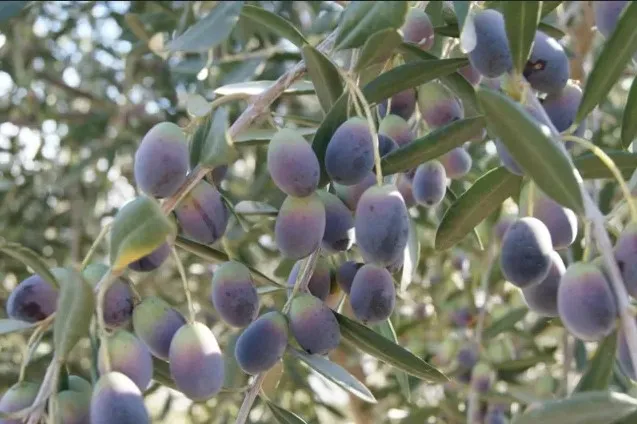
This series provides answers to selected questions recently submitted to the UC Master Gardeners of Yolo County Help Desk.
Question: I have several olive trees in my yard. How do I best care for them?
Answer: The Sacramento Valley has an ideal climate for growing olive trees, with its hot, dry summers and mild, wet winters mimicking the climate of the Mediterranean area olives evolved in. With proper care, olive trees can thrive here both as ornamental landscape features and as fruit producers. They are long-lived, with an average lifespan of 500 years, and often take on a more interesting appearance as they age.
You say that you have existing olive trees. Where they are growing will affect their health, vigor, and fruit production. Olive trees should get full sun if possible. They tolerate soils poor in nutrients but do need well-draining soils. Our clay soils can present a challenge. Gently incorporating three to four inches of compost into heavy clay will improve root development. Should you plant additional olive trees, choose places with the “lightest” soil available or work three to four inches of compost eight inches deep in the planting area.
Olive trees are drought-tolerant once established, but they need regular water during their first two to three years. Deep watering every seven to ten days helps develop strong roots. Mature trees can survive on rainfall alone during a normal rain year, but for better fruit production and growth, provide supplemental water once each month, especially during flowering and fruit set in spring through early summer.
Prune your trees in late winter to early spring. Remove suckers coming up from the roots, dead branches, and interior branches to improve air circulation and access to sunlight. Shape trees with an open center to maximize fruit production. Trees grown as an ornamental primarily can be pruned with a central leader. Annual light pruning helps to keep trees healthy and productive.
In most Valley soils, olive trees need only light fertilization. An application of balanced fertilizer (10-10-10) in early spring to coincide with flowering and fruit sizing is important and can boost growth. But avoid over-fertilizing. Excess nitrogen can reduce fruiting the following year.
Olive trees are generally low-maintenance. However, the olive fruit fly, scale insects, and sooty mold can be a problem. The olive fruit fly is the most serious threat to fruit quality. Use traps and practice sanitation (removing fallen fruit) to reduce infestations. Fungal diseases are rare in the Valley’s dry climate but may appear in wetter years. Good airflow from pruning helps prevent them.
Most olive varieties are self-fertile, but planting more than one cultivar can improve yields. Trees begin bearing fruit after 3–5 years. Olives are typically harvested in the fall, with timing depending on use. Black olives are fully ripe, while green olives are picked earlier. Olive oil can be produced from either green or ripe olives, depending on the flavor you prefer. Cure or press the olives soon after picking, as they do not store well raw.
Olive trees do not typically suffer cold damage in our area and mature trees are generally hardy to twenty degrees Fahrenheit. Young trees are more vulnerable and the best practice is to cover them during cold snaps. Some varieties are more cold-tolerant than others, with the varieties ‘Arbequina’ and ‘Mission’ tolerating frost best.
With their silvery leaves, gnarled trunks, and edible harvest, olive trees are a practical and beautiful choice for Sacramento Valley gardens. With the right care, they’ll reward you for decades.
For additional information, see- https://ipm.ucanr.edu/agriculture/olive/#gsc.tab=0 and https://ucanr.edu/blog/napa-master-gardener-column/article/olives-grove-table
This article previously appeared in the Winters Express and Davis Enterprise.
If you have a gardening question, contact the UC Master Gardener Help Desk at 530-666-8737. Or send an email, with information regarding watering, sun exposure, details about your problem, and photos, when possible, to mgyolo@ucdavis.edu.

